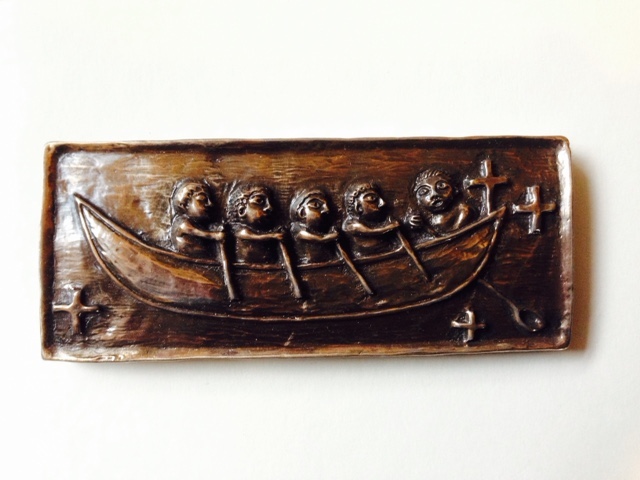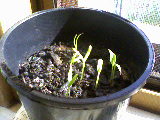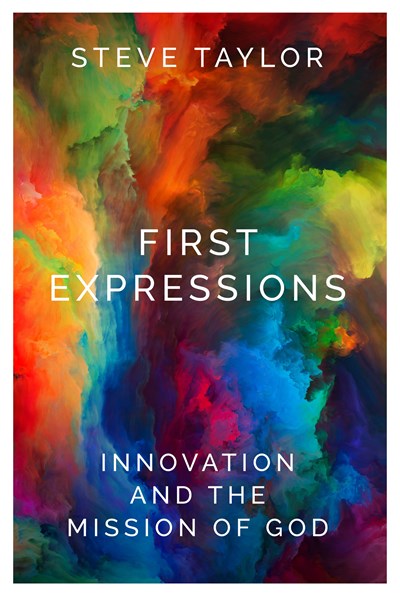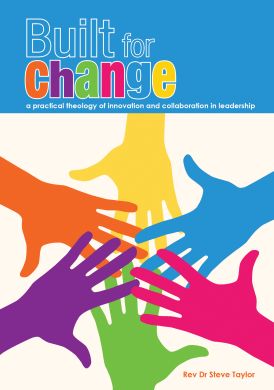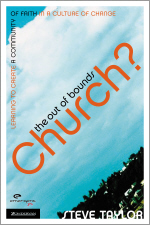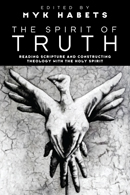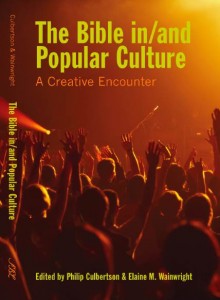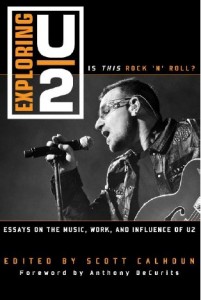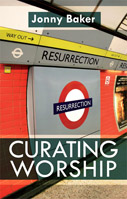Wednesday, May 18, 2011
facing the dark places of ministry and leadership
On Friday, I provided the opening address at a lay training event. The topic was God at earth – what it means to follow a God who in Jesus is real, local and grounded. In preparation I began to reflect on the feelings of Jesus – Jesus who feels
- sorrow in the Garden of Gethsemane
- tears at the death of a friend, Lazarus
- anger in the temple
- compassion at the crowds harrassed and helpless
- radical love when faced by the rich young ruler.
As I did, I began to sense some implications for mission, for our following of God at earth. In response to compassion, Jesus sends the disciples on mission. In response to anger, Jesus enacts justice. In response to radical love, Jesus challenges in radical discipleship. So often mission comes out of our heads. But what might it mean to connect our feelings with the feelings of God?
In preparing for the evening, I reflected on my feelings – the pain we feel in leaving Christchurch to move to Adelaide, the suffering watching our city experience major earthquakes in recent months.
Coincidentally (?), the last week has been really hard. I’ve been a swirl in sadness. I began to wonder if I was losing it, burning out. In hindsight I wonder if I was simply processing the talk, working through the pain of my past, the pain of my city, the pain of being the Christ, holding the cup of suffering in the Garden of Gethsemane.
Is this ridiculous? Or is this what it means to connect our feelings with the feelings of God for a world broken and in pain?
Some talks you can give easily.
Do others demand a depth of emotional engagement, the dark side which leaves one exhausted, depleted, vulnerable and fragile? If so, how does one care for oneself, be a good father, a corteous employer, in such places?
I am not sure I have many answers. But I do sense that in these dark places, in our feelings, are some leadership lessons essential for our following of Jesus today.
Thursday, May 12, 2011
a theology for mad b*****ds
I went to see the Australian movie, Mad Bastards, over the weekend.
Set in the Kimberley, in Western Australia, it is a window into the life of indigenous people in Australia today. I went as a film reviewer, to write a 500 word film review for a Christian newspaper. That’s in process, but it sits alongside the ongoing work of the Spirit in my life. Ultimately, this is a personal blog, that marks my journey, so it’s important to note that I’m in a bit of hard patch, with too much work on my to do list, to really enjoy the month of May. Add in a sick child and ongoing homesickness (Yep, the fiddle is playing). And the recent article by Nicholas Rothwell in The Australian, which continues to grieve and astound me.
A crisis of grief is unfolding, a spiritual collapse so deep it cannot be held back. … Those watching struggle for words and fear they may be watching as an entire culture, acting collectively, destroys itself. (for more go here)
That quote just keeps on undoing me. It just goes against every thing I know and profess about God and life and resurrection. Can I call myself Christian in this Aussie land when this sort of thing is happening?
Anyhow, one of the best parts of the movie was the soundtrack – original – by Alex Lloyd and Pigram Brothers. Fabulous folk rock. And all through the week, I’ve been enjoying one song in particular, Hearts and minds.
From within, from without,
There is fear and there is doubtNothing’s simple, nothing’s clear
Whats (?) the words we need to hearChorus
If we listen to the times
We can change your hearts and minds
We can change your hearts and minds
If we listen to the timesIn your soul, the fire burns
round and round it spits and curlsIn the flames, the truth may lie
Fumbling with the wrong and rightChorus
If we listen to the times
We can change your hearts and minds
We can change your hearts and minds
If we listen to the times
I was asked to lead a devotional today. The lectionary text for Sunday is John 10:1-10. I think there’s a link; between my sadness, the song, the movie and the Biblical text. For example shared themes of listening to and in change. A sense of the complexity of listening. That it takes time and requires discernment. A requirement of courage, for to listen is to lay aside what we’ve heard in the past, and to listen to today.
Wednesday, April 27, 2011
a pioneer icon
Back last century, I attended a spiritual retreat in the the form of a weekend icon painting workshop. It was a fantastic experience, a mix of spirituality, creativity and theology that resonated deeply with me. Spirituality, because icon painting is an act of prayer, of becoming centred on God. Creativity, not in the sense of making from nothing, but in the mix of colour and hands on endeavour. Theology in that icons are God-talk, a careful and detailed attempt to articulate the human understanding of God. (I hope to blog a bit more about this over the next few days.)
One of my hopes in coming to Australia was that with the “ditchchange” (pun on “seachange“) there might be space to pick up icon painting again. Well, it took over 15 months, but an icon was completed last night. It’s one of the simplest icons, called “Christ the saviour.” Being a sort of first, for me it’s become a “pioneer icon.”
I looked around for icon painters in Adelaide, but found little. So in the end I brought a book and simply had a crack (something in there about pioneering I suspect!)
Friday, February 18, 2011
an icon of the everyday: Mary holding the digital (to)day
I arrived at work to find this delightfully random moment …
I am in the midst of writing a course for distance. It’s all pretty chaotic, both in my head, on my desk and around my office floor. Before I left last night, I cleared my desk and placed a piece of paper on the noticeboard – a printed page of icons. Each icon signals the need for a student to read, to www, to reflect, to discuss, to do, to write, to media, to send.
Anyhow, overnight the “icon” paper had fallen. It had come to rest on my Mary icon (which I painted a number of years ago, and sits on my desk as a silent plea for me and my work).
So as I arrived today the paper icon, my workload, had randomly come to rest in Mary’s arms. Digital icon held by my ancient painted icon. A nicely random moment, an icon for my everyday, a random reminder to my cluttered head as it progresses throughout the day.
For more I’ve written on icons of Mary, prayer, mission and the church, go here
Friday, December 31, 2010
new years spiritual practices
The day dawned fine, after a ripper storm, a genuine weather bomb that flooded many and changed river systems.
The beach was virgin, rain swept, untouched by human foot. But crowded with driftwood, the storm’s legacy.
Each bit of wood is uniquely shaped. It seemed to speak of the year that was. A careful search ensured, for the split fingers of dislocation, for the heavy stump of overwork, a wild pine for the wrench of relationships.
Each bit was handled. And then tossed vigorously into the sea. Putting the year behind me, throw by throw, toss by toss. Moving on …
Thursday, October 28, 2010
It’s my blog so I’ll cry if I want to
Last night, I attended the installation of the new moderator for the Uniting Church of South Australia. Being from a different denomination background, a “baptist-on-loan”, these occasions are truly fascinating.
I tend to approach them as “research opportunities”, a chance to explore the spirituality of another part of God’s mosaic. But somehow last night, I found myself whacked sideways by emotion.
It happened as the outgoing moderator was being released. This involved some words, and then the invitation for his wife and church family to come forward and receive him back. Which they did, standing and coming forward to exchange hugs and handshakes.
And I started crying. (It’s my blog, so I can share this if I want to!)
I think I’m still grieving not being part of the Opawa Baptist church community. I think I’m still finding being in Australia and in this new context very difficult. As are my family. It’s not easy following Jesus. Especially when following is a cost not just to an individual, but to a family and a community.
Church history is full of leaders full of ego and ambition. Church history is also full of leaders dragged away from what they loved, in order to serve the church. (For more on this, see a reflection I wrote earlier this year on Gregory). The church is a demanding mistress and it was moving for me to see some dimension of these demands being visibly named last night.
So thanks, Uniting church, for being demanding, fascinating and for helping me cry 🙂
Friday, September 24, 2010
home is
Peppers from seed now sprouted, squash from seeds with lots of new leaves. The lettuce from seed is also up, while the wysteria is in flower. All enjoyed with a cup of tea on the deck.
It was good to go. (At some point if any are interested, I might post my report). It is even better to be back.
It was wierd flying out of Adelaide and realising that overseas now meant a whole new lot of routines. Leaving from New Zealand it was generally through Auckland and I knew where the postbox was and where the stamps were, in order to drop the first postcard to family in the mail before I flew. And then knowing the location of the chapel, for the moment of prayer, which gave just enough time for the coffee.
But leaving from a new country, means a new set of routines. As does returning and it’s no longer a ‘welcome home sir’ through the priority “New Zealand” queue.
Because in Australia I am still “migrant.” And that was somehow OK, because home is defined by peppers from seed sprouting, squash from seeds newly leaved, all enjoyed with a cup of tea on the deck …
Sunday, September 19, 2010
ode to fresh expressions below durham cathedral
Long ago (1,100 years)
little Cuthbert wandered
shepherd share and prayer
left this legacy?
Durham Dominator
Cathedral (in capitals)
largely impassive
dwarfing
below
little moat crossers pale shadows
Solid Church (in capitals)
reign
Fresh Expressions legacy
white people in white room
definitional impurity meets
mission seachange, tick
patient love buffs, buffeted in urban deprivation
hurt butts youthful can-do
as Durham bells ring
Solid Church
(in capitals)
decline
Mission stories today
curate, VJ and coffee
little Cuthberts wander
wonder
left this legacy?
God forbid
Saturday, August 21, 2010
Tasmania speaks: reflections on place and space
Tasmania is beautiful. Wet but stunning. I came a day early. I’m trying to explore how to do the whole speaking thing in ways that are more human. So rather than race in and out, I asked if I could come a day early and have a “still day.”
It made for a really, really stressed Monday-Thursday, but a very rich Friday. I worked on some exercises suggested by my spiritual director, I did an act of creative writing – the wounded picture – that has been lurking for some time. Then I changed track after lunch and worked on some research – evaluating birth narratives/how fresh expressions start (for the Sept UK conference trip).
Today I woke to this beach. The wind and rain had done their worst, and left a beautiful pristine slice of heaven.
There’s a metaphor in that. Storms are stink. Wet and depressing. But the days after can be magic. Such is the gift of a storm.
Sunday, July 25, 2010
updated: Build-your-own prayer stool: some useful websites
I’m wanting to build my own prayer stool. Not sure why, it just seems a creatively, impulsive thing to do. Sometimes, creative impulses are worth following. A quick surf of the web reveals a few useful websites
- For best creative graphics go here.
- For softies, ie tips for padding, go here
- For a prayer stool that collapses down, due to the use of hinges, go here.
- For an ecological angle on the project, go here.
So the next step is to go and get the necessary pieces of wood …
Update 1: Here it is …
complete with hinges, so it can be folded …
I am happy to make these, at cost plus postage, for anyone who wants. Just leave a comment …
Update 2: And one of my students has just taken this a step further. They are wondering about starting worship by inviting those gathered to make their own prayer stool. Wood and nails will be provided. And people invited to make their own, then use their own during the worship. (Then take their own away – the ultimate spirituality2go takeaway).
Thursday, July 15, 2010
a depression prayer worth pondering
Father God,
it is hard to hope each morning,
to look forward to new treasures and mercies,
discovered when we are alive to your presence in all that we encounter.
Open our minds to the endless possibilities of life and power and thought.
Help us to meet you in our everyday life, in our anxieties and difficulties,
for you are there with us in our pain and sorrow.
Lift us from despair to new hope. Restore and renew us each returning day,
so that we may find joy in our journey with you. Amen
A prayer from the Mozarabic Sacramentary (10th century), that I’ve been finding profoundly helpful the last few weeks, as my workload has slowly ground the joy out of living. (Hat tip)
Tuesday, June 22, 2010
haunted hope
A poem that give might give some expression to my current stage of being. Or it might not.
home
is there
while i am here
changing
home
becomes then
and i am here
now
changing
memories seep
to faded deeds
haunted
coloniser to migrant
tongued tied, in
church, old,
thriving to dying
grief to grow
time ticks
to new hopes
Friday, April 02, 2010
easter 2010
The Taylor family are all really excited. Moving from pastor at Opawa to teaching at Uniting college means that Easter 2010 marks my first Easter break in 16 years. It’s also the first Easter break the girls will have ever had with me.
Which means a totally new Easter rhythm for us. We’re heading away to a seaside town called Robe. We’ll relax and explore – ancient caves at Narocoorte, wineries in Coonwara, the distinctly Australian saint that is Mary Mackillop. After a very exhausting first term with so many changes, we are so looking forward to catching our breath together.
A second part of the totally new Easter rhythm is that we get to go to Easter services as a receiver, not a giver. When you’re a pastor, the blessing is in the chance to work with the Jesus story in the week leading up to Easter, to wrestle with the texts in preparation. This week it has been SO nice to gather not knowing what the creativity will be, to simply be participants in the story.
We went to what was a very rich Tenebrae service at the girls school on Sunday evening. It featured the readings and extinguishing of candles. It also included a range of choir items, that were crafted into a wonderful re-appropriation of the Christian sung tradition. Plus there was an excellent use of space and some thoughtful prayers. Big clap to the chaplaincy and musical teams at Westminster.
On Thursday, we went to an alternative worship gathering at Wayville, an offering from a new church community called the Esther project. Environment thoughtfully crafted, words chosen well, senses full engaged, space to sit with the Biblical story. Openended and rich.
On Sunday we’ll look to gather with a local rural community somewhere around Robe. This Easter 2010 we’ll end up engaging with just as many church services as if we were a pastoral family, but in a new and rich way.
Friday, March 12, 2010
creativity, spirituality and mental health (and the prodigal son)
What is the place of spirituality and creativity in making mental illness more manageable and aiding recovery? Should God-stuff be allowed in the treatment?
That is the question asked by academic and clinician, Kelley Raab Mayo in her new book, Creativity, Spirituality, and Mental Health: Exploring Connections.
As one specific example, she notes how hope is considered essential for healing from mental illness. She then considers imagination, and how it can be fostered by story and then uses the Prodigal Son as a case study. It offers hope, of a different future. It also hopes in the way it allows identification with different characters – those who feel cut off can identify with the younger son, those who grieve lost relationships can identify with the father, those who feel treated unfairly by life can identify with the elder brother. Thus the story reduces a sense of aloneness and offers meaning.
Whlle she sounds a note of caution –
“An approach centred on human depravity and an authoritarian God can take away personal agency rather than promote it. In contrast, a perspective centred on the loving, forgiving divine nature … is wholesome, healing, and entertains a hopeful future. Fostering hope is a core feature of any spiritual intervention.” (79)
– her conclusion is an overwhelming yes. That while drugs and therapy have a place, so do the resources of church attendance, prayer, meditation, dreams and working with sacred texts and these need to be facilitated in our work with those suffering mental illness.
“cultivating a rapprochment between psychiatry and spirituality is essential, I believe, to the future of treatment for mental illness.” (143)
This will include listening, encouraging healthy spirituality and challenging unhealthy spirituality. In so doing, we are taking seriously people as integrated whole and this is a key challenge facing both the church and the current medical profession.
